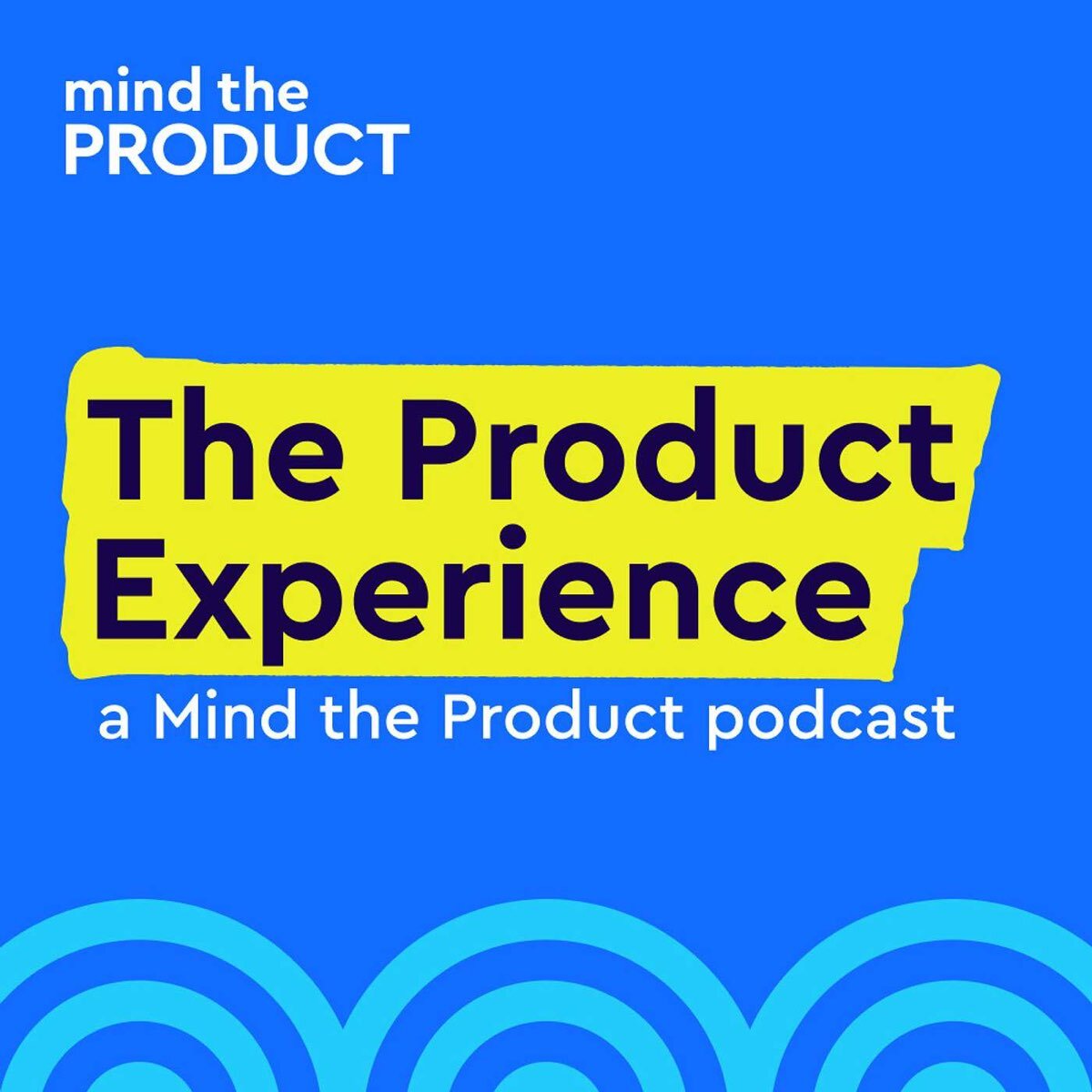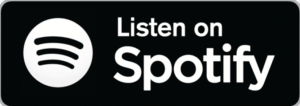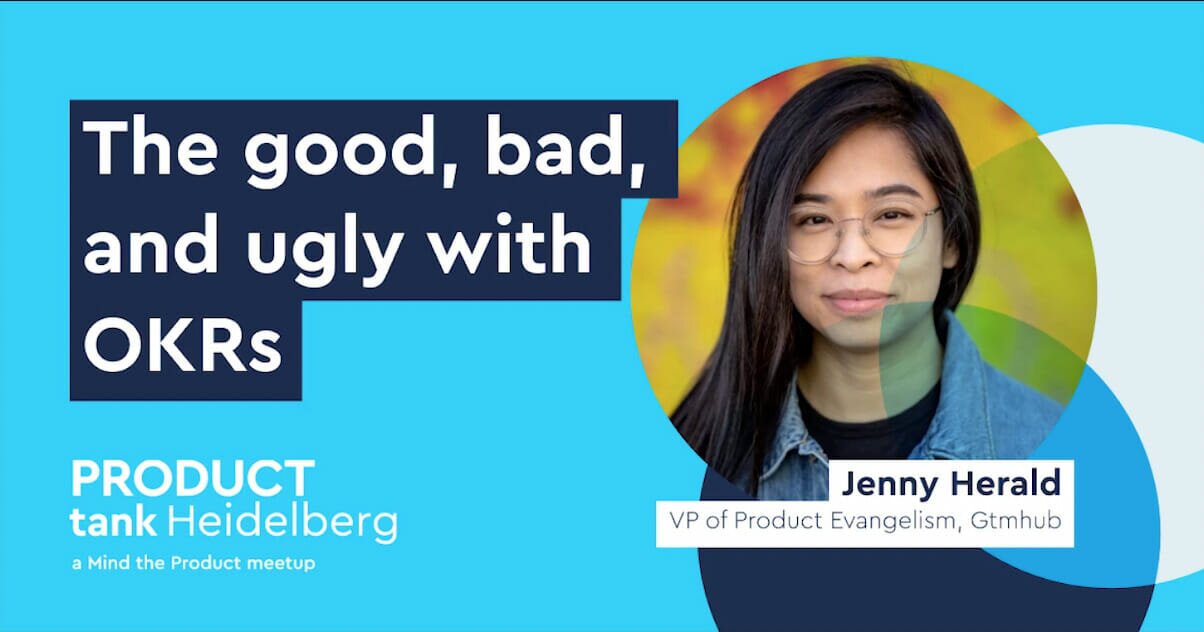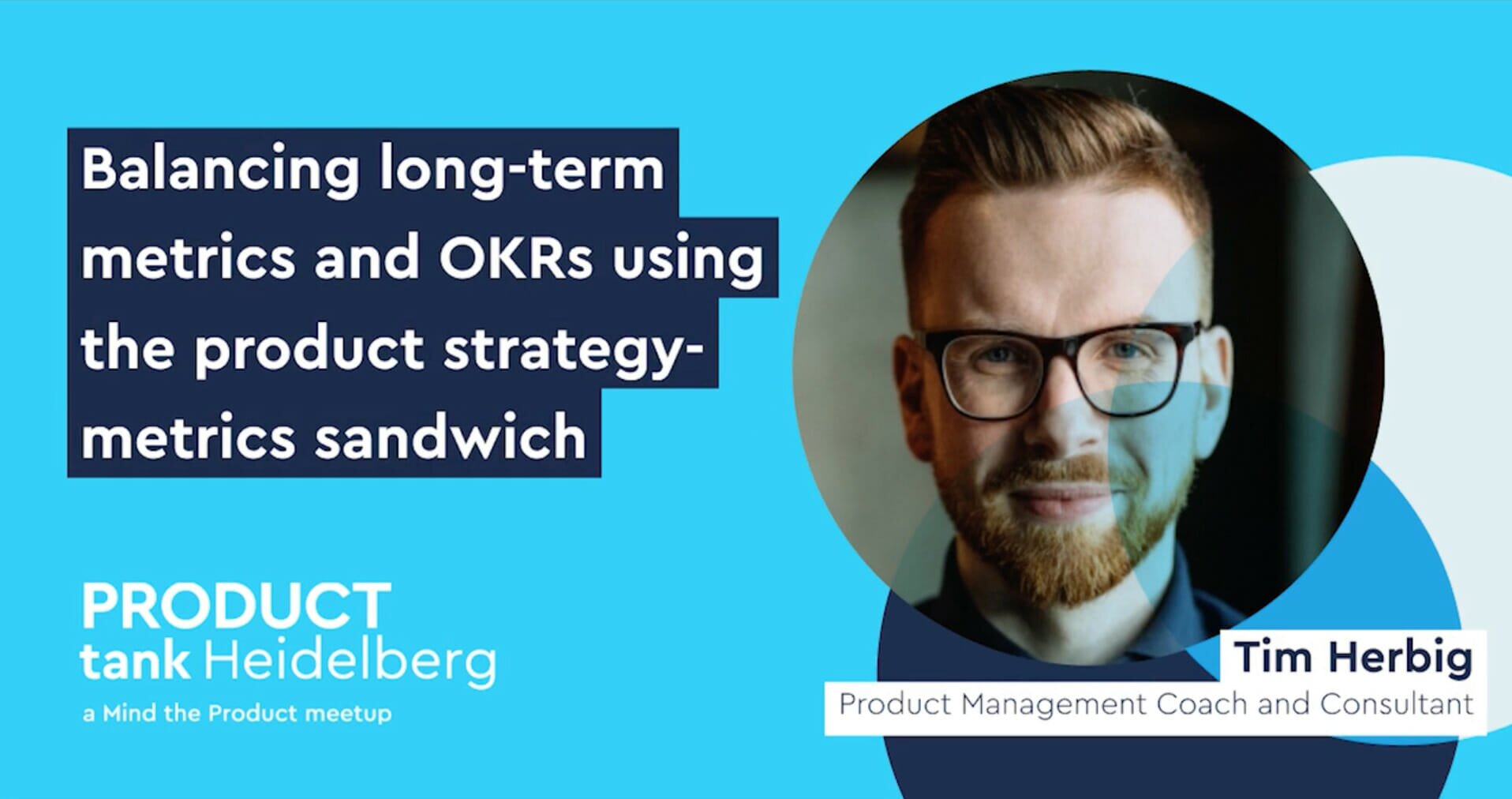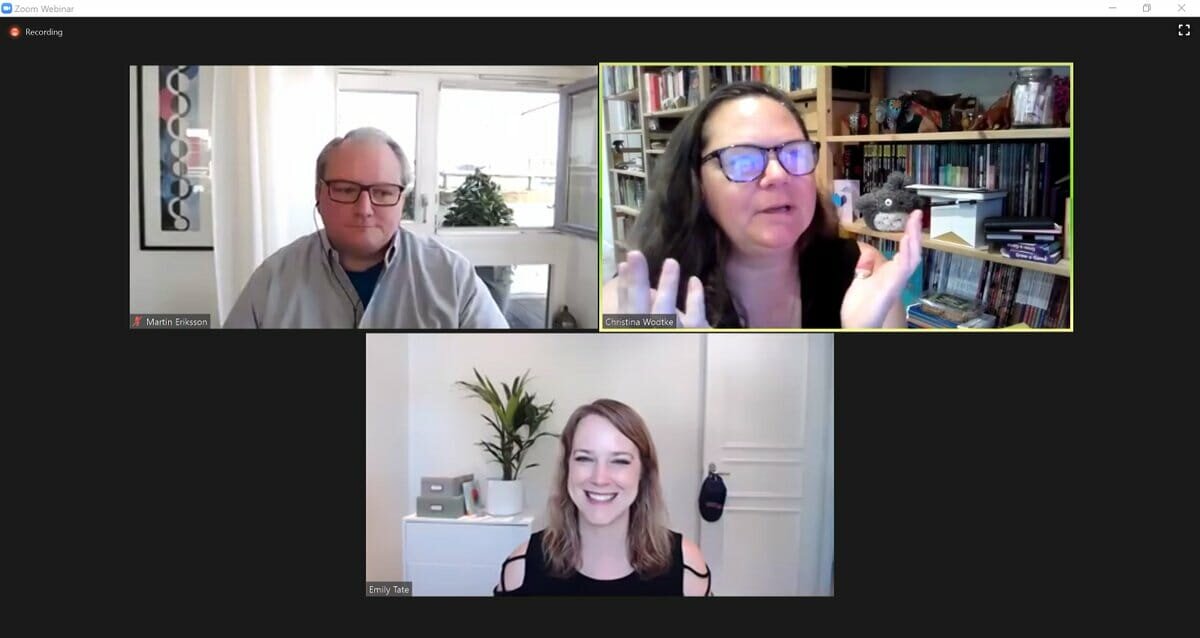This week The Product Experience is going to sound a little different…
Lily and Randy in this special episode, take a trip down memory lane, diving deep into the best OKRs insights they've experienced from a range of product experts on the podcast. Tune in to listen to actionable insights from Storm Fagan, Todd Olson, Petra Wille, and more!
Featured links
Featured Links: Follow Lily on LinkedIn and Twitter | Follow Randy on LinkedIn and Twitter | OKRs features at Mind The Product | Listen to this podcast on Youtube! | Guests included in this episode: Storm Fagan, Todd Olson, Petra Wille, Nicholas Jemetta, Kausambi Manjita, Roisi Proven, Janice Fraser, and Jason Knight.
Episode transcript
Randy Silver:
Hey Lily, we're gonna do something a little bit different. Today we're going to talk about OKRs.
Lily Smith:
Okay, Randy, you're so excited about this. I hate to break it to you. But we have talked about OKRs before.
Randy Silver:
Okay, yeah, we have. But today, we're gonna do it in a totally different way. For the last few months, we've been trying an experiment, we've been iterating. And we've been asking our guests for a bit of advice on a couple of key topics after we finished the main interview.
Lily Smith:
Oh, my God. So today's the day,
Randy Silver:
today is the day
Lily Smith:
mazing. So today is when we get to share some of the best advice we've gotten from a range of guests, all focused on one topic. So let's get right into it. Our first person is,
Randy Silver:
well hang on, hang on, let's do a proper intro on this for anyone who doesn't already know. So OKRs stands for objectives. That's the O and key results. That's the KR they got their started Intel back in the 1970s. And fun fact, they were originally called in Bose or Intel management by objectives. And then John Doerr brought them to Google.
Lily Smith:
And they got a rebrand a much needed one by the sounds of it. Yeah. So an objective is what you're trying to achieve. And the key results are how you measure if you have achieved it, typically use quarterly as a way to align people to certain goals.
Randy Silver:
And they're also often used really quite badly. There's a lot of ways to screw them up. So before we jump into good advice, Billy, do you have any favourite anti patterns for OKRs?
Lily Smith:
Oh, there are so many. What about OKRs as annual goals?
Randy Silver:
Or how about using them as a proxy for performance review? You know, time bonuses and promotion to them?
Lily Smith:
Or doing more than like, three or whatever, two or three years? For a team?
Randy Silver:
Yeah, how about just cascading them down from senior management?
Lily Smith:
So well, we could just like do this for the entire episode, couldn't we? But that would be bad. So let's hear from my good friend, Storm, Fagan, Chief Product Officer at the BBC, who had some great tips.
Storm Fagan:
She's gonna Well, I love it, okay, are actually and my secret is to really not try very hard with them. So don't make a massive process. Don't do massive change management. Don't try and cascade them everywhere. Keep them really simple. Just do three, keep them focused on strategy. And just focus on the key results and how you'll measure them.
Lily Smith:
She makes it sounds so easy. But I
Randy Silver:
think that's one of the real secrets now. OKRs don't solve everything, you know, just use them for what they're actually good for setting up proper Northstar for alignment.
Lily Smith:
That's so true, but it takes a special kind of product leader to make that work. And storm is definitely that.
Randy Silver:
Okay, so let's hear from someone else. Next up is Todd Olson, Pendo's CEO.
Todd Olson:
We use OKRs for years, so I have plenty of experience with OKRs. Look, I think the key is the OKRs have to be cross functional. We're the best ones typically our cross functional, big initiatives that you wouldn't probably do if they weren't explicitly listed as an OKR. And listing them as an OKR help brings the necessary organisational visibility and priority to them, or OKRs need to have an owner, an explicit owner and not someone who like was voluntold. But someone who raises their hand and actually wants to own it. That's a measure if we have one that's proposed, and no one will own it. It gets killed. I often find too that OKRs companies have too many. So when you're early, small one to two, larger at most three, maybe four sometimes but keep us small, discreet set.
Randy Silver:
It's a different take than storms, but, you know, kinda actually pretty similar and still very practical.
Lily Smith:
Yeah, I really like what he has to say about someone being accountable. That's pretty key. I've seen it go bad plenty of times when no one took ownership of something critical.
Randy Silver:
Okay, so so far, this has all been really positive. I want to hear something different. So let's go over to Petra Willie, who talks about an anti pattern.
Petra Wille:
Two things, don't use them if there is no product strategy. That's rule number one. So many companies are using them and there is no solid company vision strategy, product vision and strategy. And that's not how they're supposed to work. So don't. And the other secret is just like, go by radical focus in all formats, and then just like reread, listen to it or whatever. Before you Okay, our season to not make it an overcast season. Shout out to Christina.
Lily Smith:
Yeah. In case it wasn't clear, Petra is referring to Christina Volk, his book, radical focus, which is like the OKR Bible.
Randy Silver:
And while we have actually talked to Christina, we purposely talked to her about everything, but OKRs, which isn't all that helpful for this episode, but it makes a tonne of sense. I mean, no framework or approach will help you if you don't actually have a strategy.
Lily Smith:
Yeah, okay, I was gonna be a strong communication tool, but that's useless if you don't have anything coherent to actually communicate. And that feeds really nicely into what Nicolas Jemetta and Kausambi Manjita.
Nicholas Jemetta:
I had another cracking question. I have used OKRs and do use OKRs, again, to varying degrees of success over my career, I think now pretty successfully. What I found makes them work well is to build them in collaboration with my stakeholders, running collaborative mero workshops, where you talk about your objectives and you talk about your key results together is incredibly powerful. Because first of all, it allows you to figure out if there's a gap. And if there's a gap, and you can start to figure out why there's a gap where the misalignment isn't over time, you can start to align the OKRs you might not get them to be identical, but you can get them into a place where they're at least complementary. And I've certainly worked in organisations where we haven't collaborated on on OKRs and and you wonder why the problems that you get from your stakeholders aren't the problems that you're hearing from the customer.
Lily Smith:
Is anyone else totally ready for mine the products London conference happening in October. If you've been before, you're probably feeling a bit like me desperate for your MTP conflicts. And if you're new to it, this is the product conference not to miss. If you're a product person looking to advance your career, expand your network, get inspired and bring the best products to market, then this is for you. So what can you expect? Well, MTP con is known for that epic lineup of speakers, renowned product leaders within valuable insights and tactics to share. They cover a range of exciting topics that will challenge and inspire you to step up as a product manager, always with something tangible to take away into your own product practice. And this year is a pretty special one too, as it marks a decade of MTP con. So I'm expecting cyan coloured cupcakes for sure. You can go fully digital for the two days or with a hybrid ticket. You can go digital on day one and in person at the Barbican in London for day two. Very cool, find out more and book your ticket at mind the product.com forward slash London
Kausambi Manjita:
I've seen OKRs really go all right. And I think the reason is because OKRs a lot of times focuses only on the outcomes outcomes are important. But when you have a lot of you know, young folks in your team, or even sometimes, you know, people who have not not very sure about how to really get to the outcome, right. So the inputs to the outcome are equally important. And in fact, like Amazon and Jeff Bezos, they really speak a lot about input to your action and your plan leading to the outcome. So my take on OKRs is that if you're unable to spend the time with your team, and with people that you're mentoring, to actually help them iterate on the inputs that they need to put in to get to the outcome, then OKRs can really fall flat.
Lily Smith:
That's important stuff, objectives and key results don't come out of the ether fully formed. There are a great way to force people at the leadership level to have some strong alignment conversations.
Randy Silver:
And then you can't just, you know, cascade them and walk away. It's really critical that the people doing the work to hit the OKRs are fully consulted and brought in. Sometimes the OKRs even started at the team level and then are endorsed by leadership and math. That can be really powerful.
Lily Smith:
And I think Reishi Preven builds on that
Roisi Proven:
Yeah, I don't have any secrets. If anyone else has secrets they can tell me, I would say that we are still working on them being right. But I would say don't go into OKRs. Before you have looked at the core functioning of the teams and make sure that they're sort of happy and working at a good cadence. Because if you try and introduce OKRs, without that cadence, you are going to get into yourselves in a tangle immediately.
Randy Silver:
Yeah, she does. That's a great way of putting it.
Lily Smith:
Okay, let's get into another approach. Janice Fraser is not a fan of OKRs. And that's okay.
Janice Fraser:
Are you okay with negative answers? Okay, I am not a fan of OKRs or V two moms or OG CSMs, or fill in the blank. I've been part of several organisations that use them as going mechanisms. And I do think goaling mechanisms are important. But I have never seen specifically OKRs or v2 Moms drive clarity. And I have seen them become very, very complex, so complex and unwieldy, that they were no longer useful in any way. And that means that they just become a burden. They're time consuming to make you burn time and social capital trying to gain agreement. In the process of trying to gain agreement, they become really broad, or unnecessarily specific. And so I find that to be really troublesome. So instead, I really look to an outcome oriented roadmap. I think that cascading intent and is an important concept. And cascading intent is borrowed from the military. And what it really means is that it started with commander's intent, and we're not in a command and control environment here. So if we combine the idea of cascading intent with outcome oriented roadmapping, what we get is, we all know what the outcome is that we're aiming toward. And all of us can take the necessary and sufficient, you know, subordinate outcomes, smaller outcomes, to achieve that result. And we can do any means of activities or deliverables in order to get there. So what we want is to have maximum flexibility and how we get there. But we all want to be moving in the same direction. So I really rely on an outcome oriented roadmapping to create autonomy within the team and to keep everyone focused on the same results.
Randy Silver:
Yeah, I'm totally here for that. It's worth remembering OKRs are only one tool that's available, not everyone should be using.
Lily Smith:
We haven't answered one basic question. Randy, do you actually use okay as
Randy Silver:
I have, and I mean, I do it slightly wrong, and that I try to focus on one business, okay, our for product manager, plus one personal goal and one goal for Team improvement. The hardest part to getting it right is maintaining the focus to check in on each of these regularly and hold yourselves to it. Which I have to admit I haven't always been successful at. What about you, Billy?
Lily Smith:
Yeah, we do use them at our collective and I've used them in other companies, too. I think all this advice and experience really resonates with me. And reflecting often on how you're using OKRs is really important to ensure they're achieving what they're meant to achieve. Okay, there's one more person we need to hear from, not for his advice, unfortunately. But you and Jason Knight had some fun speculating about what happens if you use OKRs badly.
Jason Knight:
If we go back to OKRs, only point I'm gonna be very keen to focus on doing them properly. Because otherwise Christina Wodtke will tell me off a little namedrop at the end.
Randy Silver:
I like to do looking in the mirror and saying Christina Wodtke three times
Jason Knight:
three times and she comes in and tells you all for your binary OKRs.
Randy Silver:
Don't put a pastor
Jason Knight:
she is ultimately powerful. And with that,
Randy Silver:
we're done. Oh, that was fun. You know, we've got two more of these lined up on different topics that we'll share over the next few months. And if you have a topic you'd like to suggest for us to do in the future, just shout And let us know what you think of this different format.
Lily Smith:
See you next week. The product experience is the first and the best podcast from mine the product. Our hosts are me Lily Smith, and me Randy silver. Louron Pratt is our producer and Luke Smith is our editor.
Randy Silver:
Our theme music is from humbard baseband pow. That's P AU. Thanks to Arne Kittler who curates both product tank and MTP engage in Hamburg and who also plays bass in the band for letting us use their music. You can connect with your local product community via product tank, regular free meetups in over 200 cities worldwide.
Lily Smith:
If there's not one near you, maybe you should think about starting one. To find out more go to mind the product.com forward slash product tank
